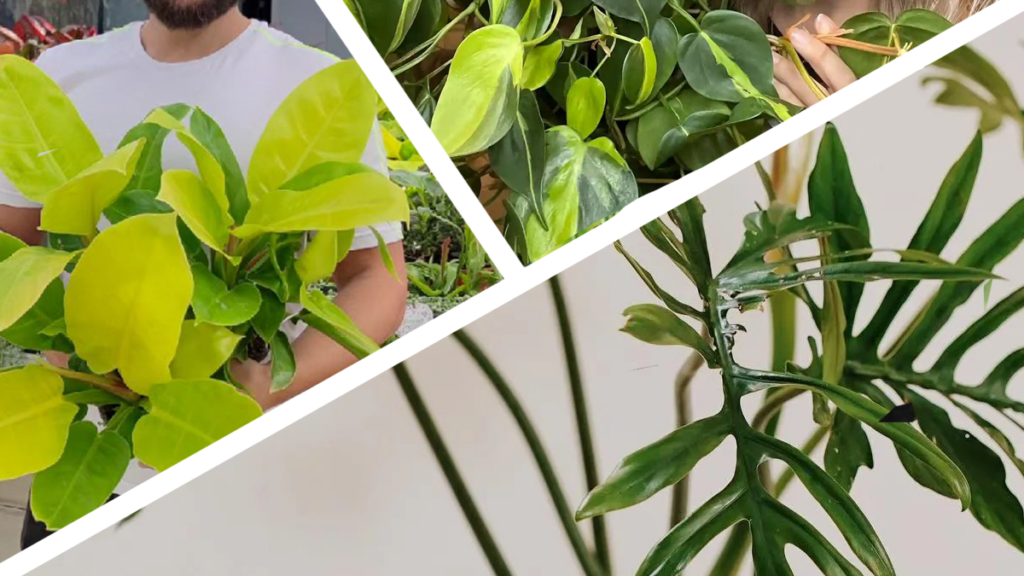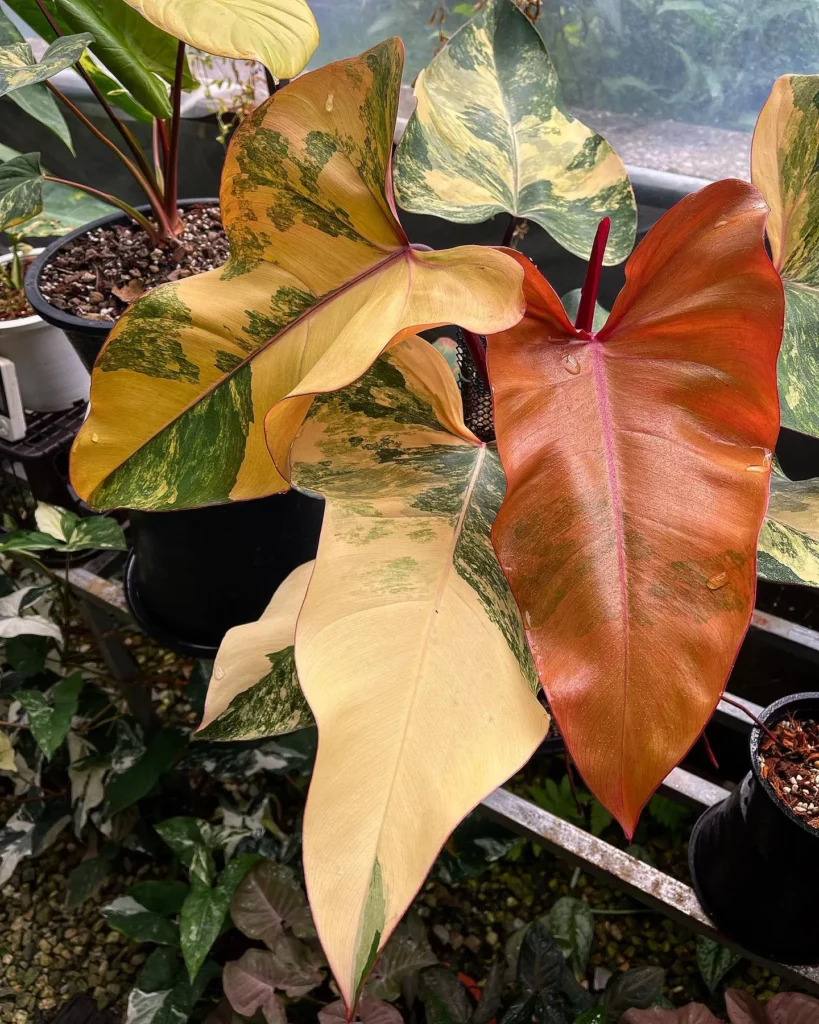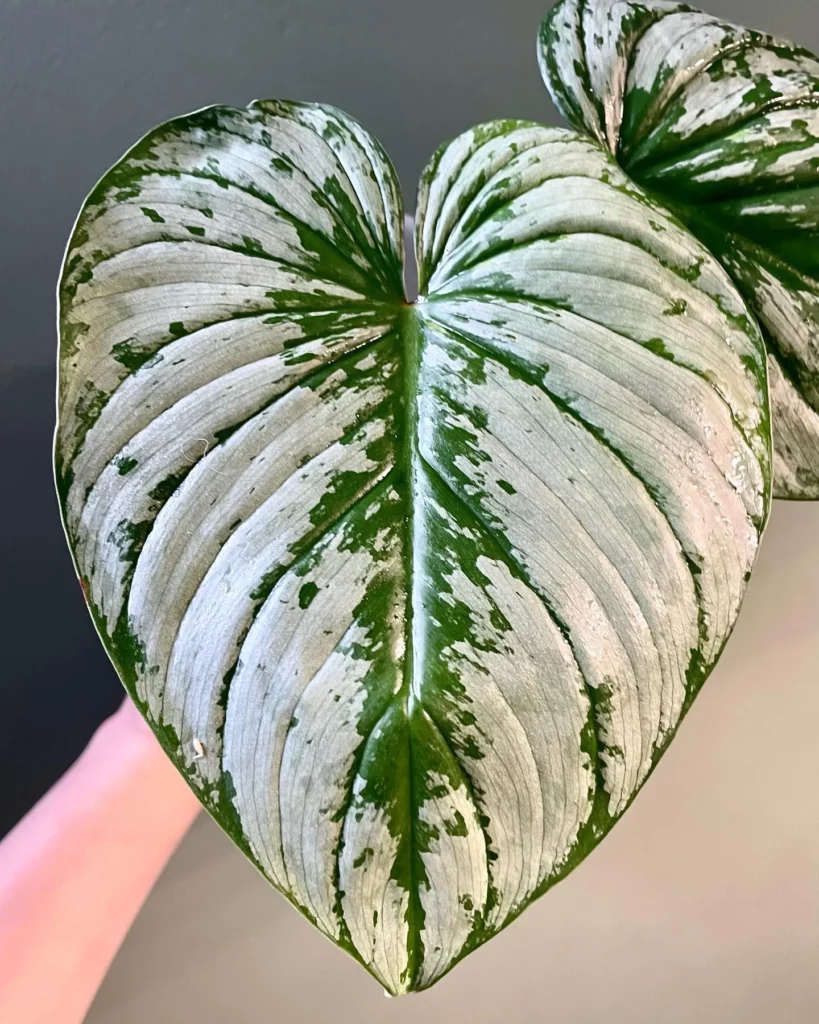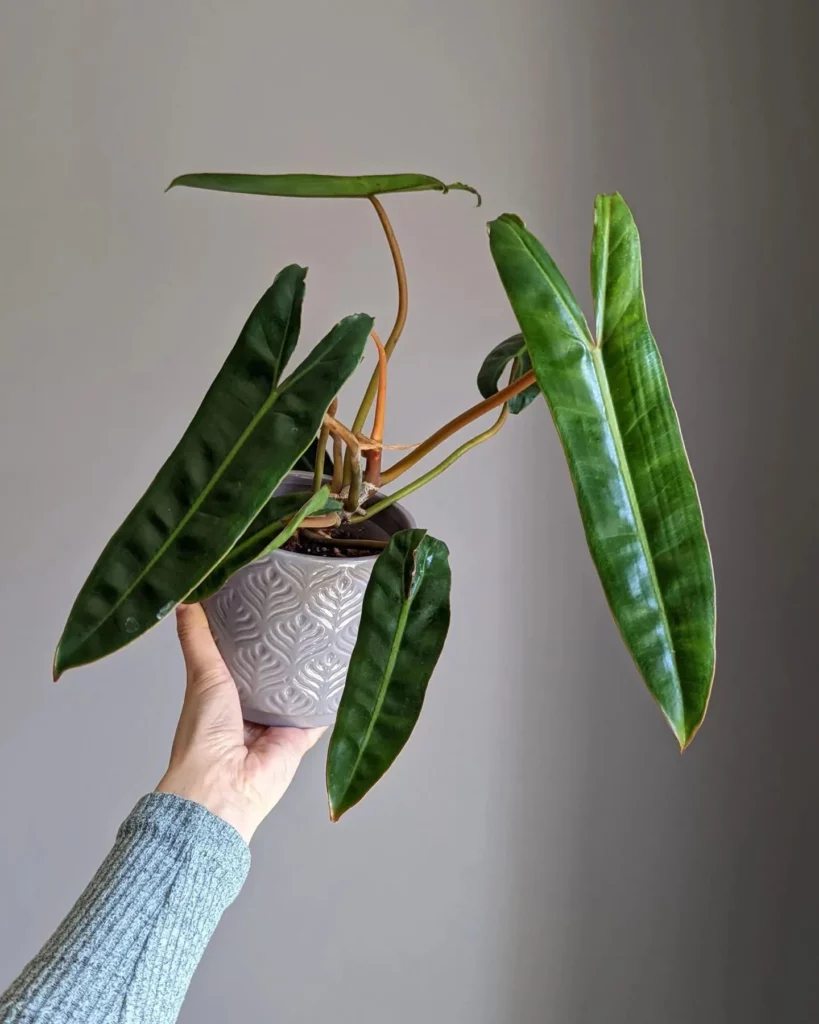Welcome to my guide on Philodendron Xanadu care and growth. If you’re a plant enthusiast or looking to add a new green companion to your indoor or outdoor space, you’re in the right place. Philodendron Xanadu is a popular foliage plant known for its unique leaf shapes and textures.
Key Takeaways:
- Philodendron Xanadu is a popular foliage plant known for its unique leaf shapes and textures.
- This plant is ideal for both indoor and outdoor growth, with a compact size that makes it a preferred choice for indoor spaces.
- Philodendron Xanadu thrives in medium to bright indirect light and prefers light shade when grown outdoors.
Appearance of Philodendron Xanadu



Philodendron Xanadu is a stunning plant that captivates with its unique appearance. Its leaves are a deep green color and boast an alluring feather-like shape, adding a touch of elegance to any space. One of the standout features of Philodendron Xanadu is its heavily lobed leaves, which create a lush and tropical aesthetic.
The attractive foliage of Philodendron Xanadu is not only visually pleasing but also offers a variety of textures. The leaves have toothed edges, further enhancing their beauty and making them a focal point in any room. With its compact growth habit, this plant spreads its leaves wider rather than growing vertically, giving it a distinctive and eye-catching look.
Leaf Shapes and Textures:
- Deep green color
- Feather-like shape
- Heavily lobed leaves
- Toothed edges
No products found.
Light Requirements for Philodendron Xanadu



When it comes to caring for Philodendron Xanadu, providing the right amount of light is crucial for its growth and overall health. This plant thrives in medium to bright indirect light, making it an excellent choice for indoor settings. To ensure optimal light conditions, I recommend placing your Philodendron Xanadu near a window with a sheer curtain or in an area with filtered sunlight. This will allow the plant to receive the necessary amount of light without direct exposure to the sun’s harsh rays.
Indoor light is the ideal choice for Philodendron Xanadu as it mimics the filtered light conditions found in its natural habitat. This type of light helps promote healthy foliage growth and prevents the risk of leaf burn. If you choose to grow your Philodendron Xanadu outdoors, providing light shade is essential to protect the plant from intense sunlight, which can also cause damage to the leaves.
Benefits of Indirect Light for Philodendron Xanadu:
- Supports healthy foliage growth
- Prevents leaf burn
- Mimics the plant’s natural habitat
- Avoids direct exposure to harsh sunlight
Watering Philodendron Xanadu


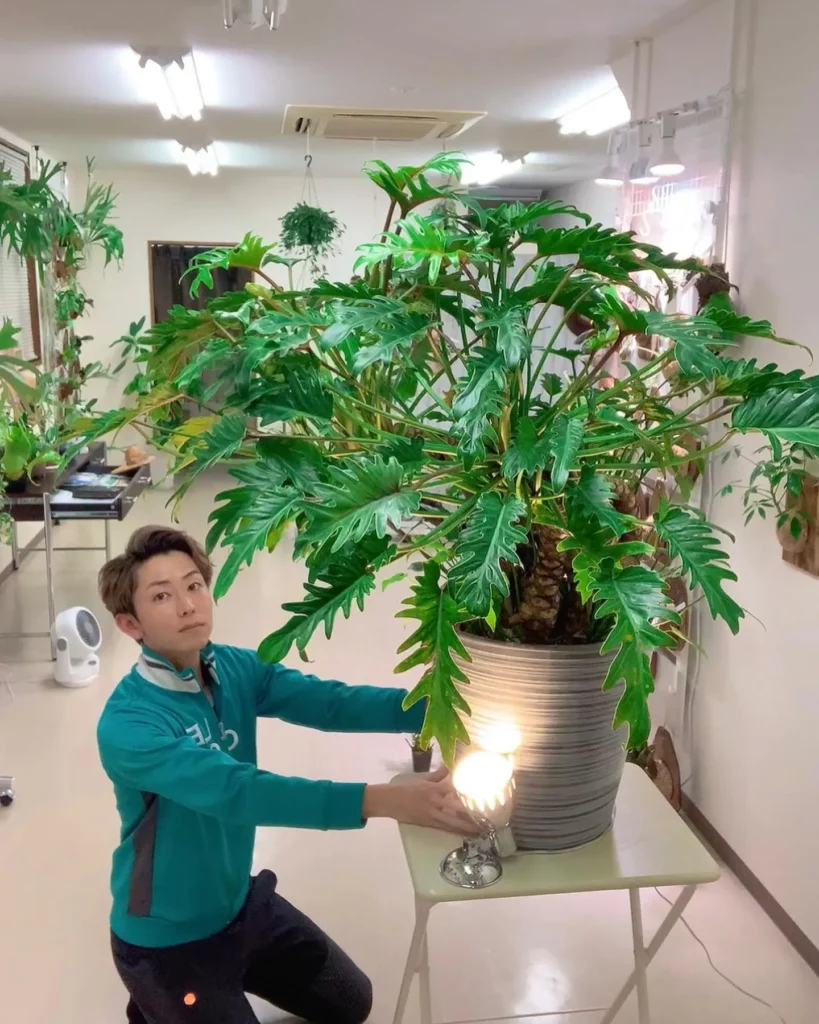
Proper watering is crucial for the health and growth of your Philodendron Xanadu. It is essential to maintain the right moisture level in the soil to prevent overwatering or underwatering. Here are some guidelines to help you water your Philodendron Xanadu effectively:
- Check the soil moisture: Insert your finger about an inch deep into the soil. If it feels dry at this depth, it’s time to water the plant. However, if the soil is still moist, hold off on watering.
- Avoid overwatering: Philodendron Xanadu prefers to dry slightly between waterings. Overwatering can lead to root rot and other problems. It is better to underwater slightly than to overwater.
- Monitor environmental factors: Factors such as temperature, humidity, and light conditions can affect the watering needs of your Philodendron Xanadu. Adjust the watering frequency accordingly to provide optimal conditions for the plant.
Watering frequency:
The frequency of watering your Philodendron Xanadu may vary depending on various factors. As a general guideline, watering once a week is usually sufficient. However, always observe your plant’s specific needs. If the environment is particularly dry or if your plant is exposed to more intense lighting conditions, it may require more frequent watering.
Fertilizing Philodendron Xanadu



Fertilizing Philodendron Xanadu is an important aspect of its care and growth. By providing the right nutrients, you can ensure that your plant thrives and maintains its lush foliage. Here are some key points to consider when it comes to fertilizing this beautiful plant:
Choosing the Right Fertilizer
- Select a balanced fertilizer with an N-P-K ratio of 3-1-2. This means that the fertilizer contains equal parts of nitrogen (N), phosphorus (P), and potassium (K), respectively. This balanced ratio will provide the necessary nutrients for healthy growth.
- Alternatively, you can opt for a general-purpose fertilizer with a lower ratio number for each nutrient, such as 10-5-5. This will still provide the necessary nutrients, but in a slightly different proportion.
Fertilizing Schedule
- During the active growth phase in spring, summer, and early fall, fertilize your Philodendron Xanadu every two to four weeks. This is when the plant is actively using nutrients to support its growth.
- As the plant’s growth slows down in the fall, reduce the fertilization rate to once every four to six weeks. This will provide enough nutrients to sustain the plant without overfeeding it.
- During the winter dormancy period, it is best to stop fertilizing. The plant’s growth is naturally slower during this time, and it doesn’t require as many nutrients.
No products found.
Potting Philodendron Xanadu
When it comes to potting Philodendron Xanadu, there are a few key factors to consider to ensure the plant thrives in its new home. Choosing the right pot is crucial. Opt for a well-draining pot with drainage holes at the bottom. This allows excess water to escape and prevents waterlogging, which can lead to root rot.
Next, select a loose potting mix that drains well. A mix containing peat moss works great for Philodendron Xanadu. Avoid compacting the potting mix too much, as this can restrict root growth. The roots of the plant need room to breathe and expand freely.
As your Philodendron Xanadu grows, you may need to repot it every one to two years. This is necessary when the plant starts to outgrow its current pot. When repotting, simply transfer the plant to a larger pot, ensuring to use the same well-draining potting mix mentioned earlier. This gives the plant the space it needs to continue thriving.
Propagation of Philodendron Xanadu
Growing new Philodendron Xanadu plants can be a rewarding experience, and there are two primary methods of propagation: division and stem cuttings. Both techniques are relatively simple and can be successfully carried out by plant enthusiasts of all skill levels.
Propagation through Division
Division is a straightforward method of multiplying Philodendron Xanadu plants. To propagate this way, gently separate a portion of the plant when repotting. Carefully pull apart one clump and separate the roots, ensuring each new section has a good amount of roots attached. Repot the divided portions in separate containers, providing them with the necessary care and conditions for growth.
Propagation through Stem Cuttings
Stem cuttings are another effective way to propagate Philodendron Xanadu. Begin by selecting a healthy side shoot from the parent plant. Using clean, sharp scissors or pruning shears, carefully cut the shoot, making sure to include two or three leaves near the top. Remove most of the leaves from the lower portion of the cutting, leaving only a few at the top. Plant the cutting in well-draining soil and place it in a well-lit area with indirect light. With time and proper care, the cutting should develop roots and establish itself as a new plant.
Growth and Development of Philodendron Xanadu
Philodendron Xanadu is a unique plant known for its compact size and spreading habit. This plant is a perfect choice for those looking to add some greenery to their space without taking up too much vertical space. Its attractive foliage spreads wider, creating a lush and tropical look. When grown outdoors, Philodendron Xanadu can reach widths of up to 5 feet, while indoors, it remains more compact, making it suitable for smaller spaces.
Optimal care and conditions are crucial for the growth and development of Philodendron Xanadu. The plant’s growth is most active during the spring, summer, and early fall, when it requires regular watering and fertilization. During this period, it’s important to provide the plant with medium to bright indirect light to support its growth. However, during the winter dormancy period, the plant’s growth slows down, and watering and fertilization should be reduced to accommodate its natural cycle.
To promote healthy growth, it is crucial to provide Philodendron Xanadu with a well-draining potting mix and ensure proper drainage to prevent root rot. Regular repotting every one to two years will also help the plant thrive and prevent it from becoming root-bound. Additionally, pruning any leggy or overgrown stems can help maintain the plant’s compact size and encourage new growth.
Pests and Diseases of Philodendron Xanadu
As a Philodendron Xanadu owner, I understand the importance of keeping this beautiful plant free from pests and diseases. While Philodendron Xanadu is generally resistant to pests, it’s not completely immune. One common pest that can affect this plant is mealybugs. If you spot these tiny white insects on your plant, don’t worry – there are simple solutions. Wiping them off with insecticidal detergent or using neem oil can effectively eliminate mealybugs.
To prevent pest infestations, it’s a good idea to regularly spritz and wash the leaves of your Philodendron Xanadu. This helps to keep pests at bay and maintain the plant’s overall health. However, it’s important to remember that prevention is always better than cure. By providing optimal care, such as proper watering and fertilization, you can create an environment that is less susceptible to pest attacks.
While pests are a potential threat, diseases can also affect the health of your Philodendron Xanadu. Keep a close eye on your plant for any signs of diseases, such as leaf discoloration or wilting. If you notice any issues, take immediate action to address them. To minimize the risk of diseases, avoid over-fertilization and ensure that you are providing the right amount of water and care for your plant. With a little diligence and attention, you can keep your Philodendron Xanadu thriving and pest-free.
FAQ
What is the appearance of Philodendron Xanadu?
Philodendron Xanadu has deep green leaves with a feather-like appearance. The leaves are heavily lobed and have toothed edges, giving the plant a lush and tropical look.
What are the light requirements for Philodendron Xanadu?
Philodendron Xanadu thrives in medium to bright indirect light. Place the plant near a window with filtered sunlight when grown indoors. In outdoor settings, provide it with light shade to protect it from intense sunlight.
How often should I water Philodendron Xanadu?
Philodendron Xanadu prefers to dry slightly between waterings. Check the soil moisture by inserting your finger about an inch deep into the soil. Water the plant when the soil feels dry at this depth. Typically, watering once a week is sufficient, but adjust as needed based on the plant’s needs and environmental conditions.
How should I fertilize Philodendron Xanadu?
Fertilize Philodendron Xanadu every two to four weeks during its active growth phase in spring, summer, and early fall. Use a balanced fertilizer with an N-P-K ratio of 3-1-2 or a general-purpose fertilizer with a lower ratio number for each nutrient. Reduce fertilization in fall and stop during winter dormancy. Apply the fertilizer while watering the plant to prevent root burn.
What should I consider when potting Philodendron Xanadu?
Choose a well-draining pot with drainage holes at the bottom to prevent waterlogging and root rot. Use a loose potting mix that drains well, such as a mix with peat moss. Avoid compacting the potting mix too much to allow the roots to breathe and expand freely. Repot the plant every one to two years when it outgrows its current pot.
How can I propagate Philodendron Xanadu?
Philodendron Xanadu can be propagated through division or stem cuttings. To propagate through division, gently separate a portion of the plant while repotting and repot it in a separate container. For stem cuttings, carefully cut a side shoot, remove most of the leaves, and place the cutting in soil. Keep it in a well-lit area with indirect light, and it should root in a few weeks.
How does Philodendron Xanadu grow and develop?
Philodendron Xanadu has a compact growth habit, spreading its attractive foliage wider instead of growing vertically. It can reach widths of up to 5 feet when grown outdoors, but it remains more compact indoors. The plant’s growth is most active during the spring, summer, and early fall, and slows down during the winter dormancy period.
Are there any pests and diseases I need to watch out for with Philodendron Xanadu?
While Philodendron Xanadu is generally resistant to pests, it can occasionally be affected by mealybugs. If pests are found, wipe them off with insecticidal detergent or neem oil. Regularly spritzing and washing the leaves can help prevent pest infestations. Monitor the plant for any signs of diseases, such as leaf discoloration or wilting, and take appropriate measures to address the issue. Proper watering, care, and avoiding over-fertilization can help prevent common plant diseases.

